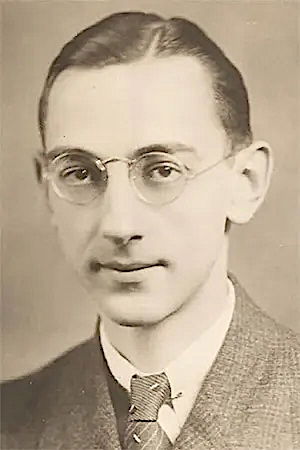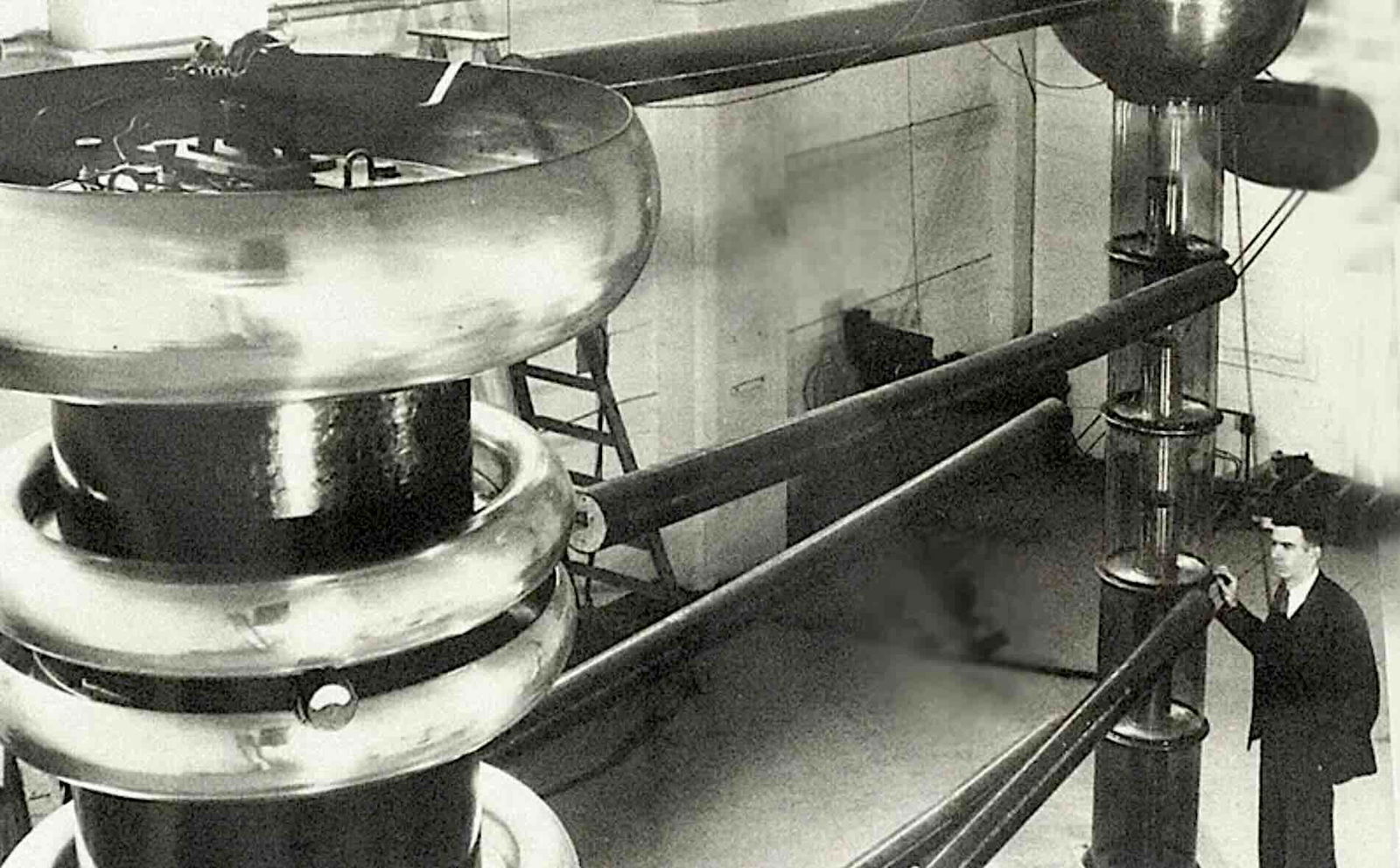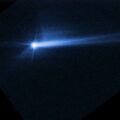In 1938, an experiment by University of Michigan physicist Arthur Ruhlig led to a remarkable accidental discovery: the first recorded observation of deuterium-tritium (DT) fusion.
Ruhlig reported his discovery, detailing what he characterized at the time as a gamma-ray experiment, in a letter to the editor published in Physical Review. Yet despite the experiment’s groundbreaking nature, it was largely overlooked at the time, and became just another lost anecdote from the annals of science history.
That is, until now. Thanks to the work of a team of Los Alamos scientists in collaboration with Duke University, Ruhlig’s forgotten experiment from 1938 has been unearthed and replicated, revealing a lost discovery that nonetheless may have seeded a foundational concept in nuclear physics.
The discovery was made as part of a recent effort to trace the origin of DT fusion within the broader historical record of fusion. The experiment, now having been replicated using modern equipment and theoretical tools, allowed the Los Alamos team to confirm Ruhlig’s primary observation that DT fusion occurs with high probability during interactions between deuterium and tritium nuclei—an insight that now underpins both nuclear energy development and national defense technologies.
A Forgotten Chapter in Fusion Research, Rediscovered
Today, the DT fusion reaction is of fundamental significance to fusion energy technologies and plays a key role in modern nuclear deterrence. Despite its crucial role in these modern applications, questions had long remained about where, precisely, the first evidence of this reaction had originated.
Such questions had been on the minds of Los Alamos physicists Mark Chadwick and his colleague Mark Paris, who in 2023 were delving deeply into the early history of nuclear fusion. While revisiting known milestones like physicist Emil Konopinski’s 1942 endorsement of DT fusion during a conference led by J. Robert Oppenheimer, a fundamental question arose: what led Konopinski to this precocious insight, especially one that foreshadowed DT fusion’s potential uses involving a fission reaction weapon?
Given that the Manhattan Project had only begun a few months beforehand, the choice in pursuing DT fusion would certainly have been fortuitous, especially if it had involved blind luck. However, Chadwick, Paris, and their colleagues soon determined that this likely hadn’t been the case at all.
Archive Searches Reveal a Forgotten Clue
A deeper dive into the mystery eventually led Chadwick to the National Security Research Center archives, where a late-night search uncovered a potential clue: a 1986 audio recording in which Konopinski credited his unique interest in DT fusion to “pre-war” research.
“I happened to know from pre-war work that the reaction of deuterium with hydrogen-3 produces much more energy and has a larger cross-section, so to speak,” Konopinski can be heard saying in the recording. “[It] happens more easily than deuterium with deuterium.”
“I just happened to remember these things,” Konapinski said. “We had these continuous conversations going on about rates of reaction, and I happened to know that this rate of reaction was a very good one. A very rapid one.”
Based on Konapinski’s recollection involving “pre-war work,” Chadwick and his colleagues were able to track down Arthur Ruhlig’s 1938 letter in Physical Review discussing his studies involving high-energy proton emissions while bombarding deuterium with deuterons.
Ruhlig noted toward the end of his letter that the unusually energetic protons he observed were the result of secondary reactions involving tritium, formed in situ, and deuterium. He concluded that DT fusion “must be an exceedingly probable one,” estimating its reaction rate based on the yields of protons.
Lost, But Not Forgotten Physics
Ruhlig’s work may have eventually been lost to history, but it had hardly been entirely forgotten. If anything, it seemingly left quite an impression on those who encountered it, which likely included Konopinski, who would recall reading about such “pre-war work” decades later.
Building on the potential connection, Chadwick and his colleagues noted that both Konopinski and Ruhlig had been University of Michigan doctoral students in the 1930s, with overlapping mentors and connections to Hans Bethe, who was also mentioned in Ruhlig’s paper regarding a private conversation the two men had where Ruhlig detailed what he had observed for his mentor. The DT reaction, Ruhlig concluded, “must be an exceedingly probable one.”
 Physicist Arthur Ruhlig in an undated photo from around the time of the publication of his letter in Physical Review (Photograph courtesy Vivian Ruhlig Lamb).
Physicist Arthur Ruhlig in an undated photo from around the time of the publication of his letter in Physical Review (Photograph courtesy Vivian Ruhlig Lamb).
Recreating the 1938 Experiment
After tracing the likely origins of DT fusion’s discovery back to its earliest pre-war roots, the next step for Chadwick and Paris was to recreate the original experiment from 1938. To achieve this, they approached Los Alamos Lab Director Thom Mason, who encouraged the team to recreate the experiment using modern physical hardware, rather than relying solely on simulations.
This led to a collaboration with Duke University physicists at the Triangle Universities Nuclear Laboratory in North Carolina, where the team successfully reconstructed Ruhlig’s setup using modern equipment and state-of-the-art precision.
To achieve this, they utilized a 3.5-mm deuteron beam from the laboratory’s Tandem accelerator, which was set to its lowest operating power. Next, the team directed the beam at a deuterated phosphoric acid target, similar to the one used in 1938. To mimic Ruhlig’s original beam environment, a cobalt-alloy foil was used, along with a liquid scintillator neutron detector, which allowed the team to track the signature neutron emissions from secondary DT fusion reactions.
“In contrast to fusion experiments such as in the inertial confinement fusion efforts at the National Ignition Facility, we were able to perform, for the first time at a low-energy nuclear physics facility, a DT fusion experiment as a secondary reaction following the initial deuterium-deuterium interaction which provides the tritium,” said Werner Tornow, the Duke University lead physicist on the project.
“This work helps answer some intriguing questions about physics history, but it’s also impactful in extending our ability to work with DT fusion in a considerably more challenging environment,” Tornow said.
Ruhlig’s Findings Validated
Fundamentally, the team’s work has confirmed that secondary DT reactions occur under such experimental conditions, although with one caveat: Ruhlig appeared to have overestimated the frequency of those reactions. Still, although his original 1938 letter lacked the detailed methodology to determine his precision, the modern replication of his experiment produced results that were a close match for Ruhlig’s original estimates.
“Regardless of the inconsistency of Ruhlig’s rate of fusion against our modern understanding, our replication leaves no doubt that he was at least qualitatively correct when he said that DT fusion was ‘exceedingly probable,’” Chadwick said in a statement.
“Ruhlig’s accidental observation of DT fusion, together with subsequent Manhattan Project cross-section measurements, contributed to the peaceful application of DT fusion in tokamaks focused on energy projects,” Chadwick added.
“I think we’re all proud to lift Arthur Ruhlig up again out of history as an important contributor to ongoing, vital research,” he said.
Additionally, as a final fitting tribute to Ruhlig’s pioneering work, the team published one of three new papers detailing the results of their recent work in Physical Review—the same journal that first printed Ruhlig’s 1938 letter 87 years ago.
That paper, “Modern version of the uncited 1938 experiment that first observed DT fusion,” was published on June 20, 2025, along with two supplemental papers, “A lost detail in D-T fusion history,” appearing in Physics Today, and “Early nuclear fusion cross-section advances 1934-1952 and comparison to today’s ENDF data,” published in Fusion Science and Technology.
Micah Hanks is the Editor-in-Chief and Co-Founder of The Debrief. He can be reached by email at micah@thedebrief.org. Follow his work at micahhanks.com and on X: @MicahHanks.


